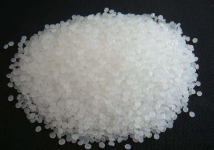read: 696 time:2025-07-01 12:29:48 from:化易天下
In the field of organic chemistry, understanding the stability of various molecules is crucial, especially when it comes to compounds like phenol and its conjugate base, phenoxide. One question that often arises is: Why is phenoxide more stable than phenol? This article delves into the factors that contribute to this difference in stability, providing a detailed analysis.
One of the primary reasons why phenoxide is more stable than phenol lies in the resonance effect. Phenoxide is the conjugate base of phenol, formed when phenol loses a proton (H⁺). In phenoxide, the negative charge on the oxygen atom can delocalize into the aromatic ring through resonance. This delocalization spreads the negative charge over several atoms, reducing the overall energy of the molecule and increasing its stability.
On the other hand, in phenol, the oxygen atom is bonded to a hydrogen atom, and although there is some electron delocalization into the ring, it is not as pronounced as in phenoxide. The lack of a fully delocalized negative charge means that phenol is less stable compared to phenoxide.
Another factor that explains why phenoxide is more stable than phenol is the inductive effect. Oxygen is highly electronegative, and in phenol, it draws electron density away from the hydrogen it is bonded to. This creates a polarized bond, making the O-H bond easier to break, which is why phenol is acidic and can easily lose a proton to form phenoxide.
In phenoxide, after the proton is lost, the negative charge on the oxygen is somewhat stabilized by the inductive effect of the oxygen atom itself. The resonance stabilization further contributes to reducing the energy of the molecule. Thus, the combined effects of inductive withdrawal and resonance stabilization make phenoxide more stable than phenol.
The stability of phenoxide is also influenced by solvation and hydrogen bonding. In polar solvents, phenoxide ions can form strong hydrogen bonds with solvent molecules, which helps stabilize the negative charge. This solvation effect further increases the stability of phenoxide compared to phenol.
Phenol can also engage in hydrogen bonding, but the effect is less pronounced because the molecule is neutral overall. The interaction between phenol and solvent molecules is weaker than that between phenoxide and solvent molecules, contributing to the higher stability of phenoxide.
In summary, why phenoxide is more stable than phenol can be attributed to several factors. The resonance effect allows for delocalization of the negative charge in phenoxide, significantly increasing its stability. The inductive effect of oxygen, combined with solvation and hydrogen bonding in polar solvents, further contributes to the greater stability of phenoxide over phenol. Understanding these factors is crucial for a deeper comprehension of chemical reactivity and stability in organic compounds.

Jincheng Petrochemical's 300000 ton polypropylene plant successfully trial production, 2024 polypropylene market analysis

The ABS market remains sluggish, what is the future direction?

Market differentiation of bisphenol A intensifies: prices rise in East China, while prices generally decline in other regions

The production method and process flow of silicone acrylic lotion, and what are the common raw materials